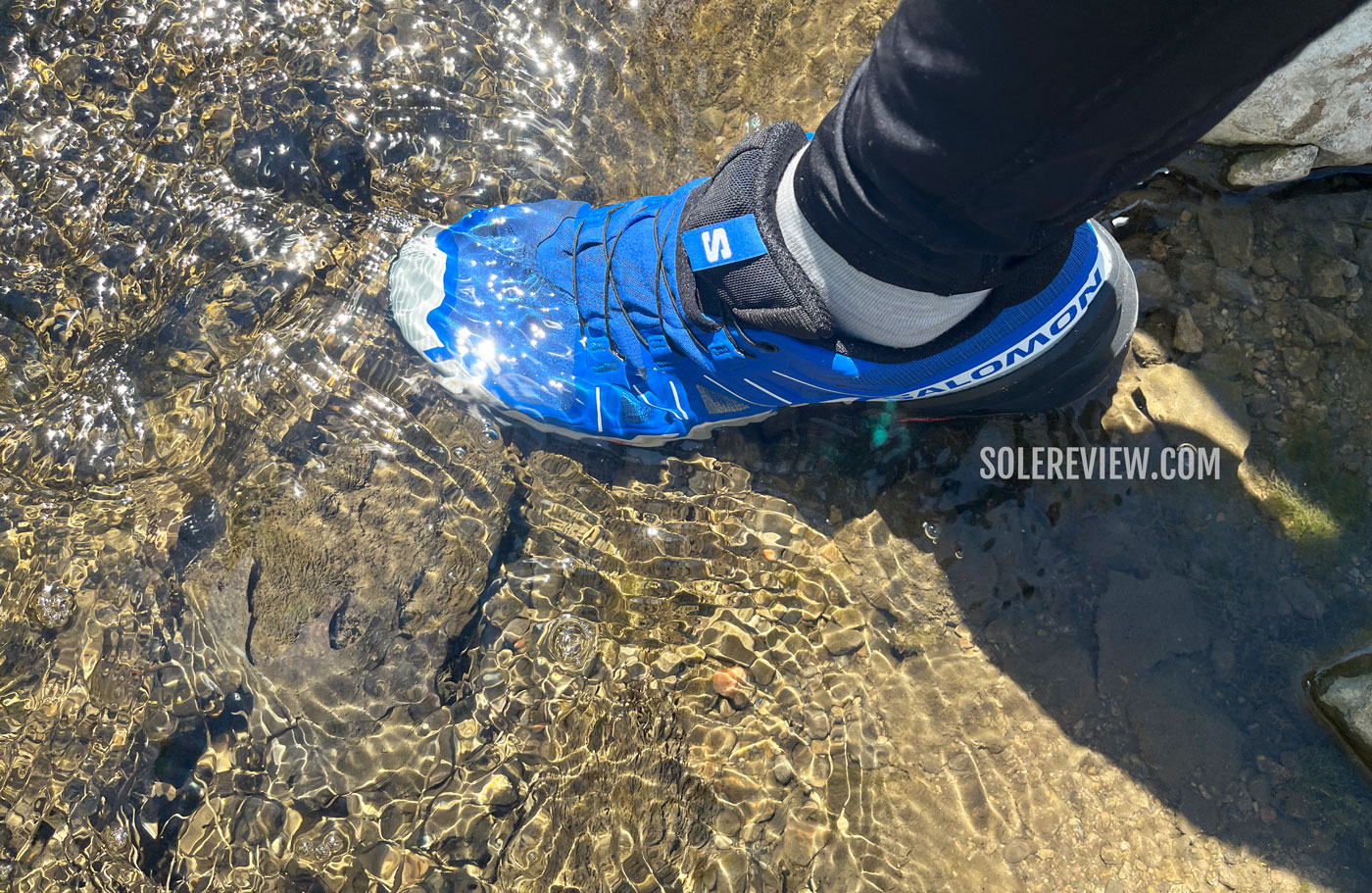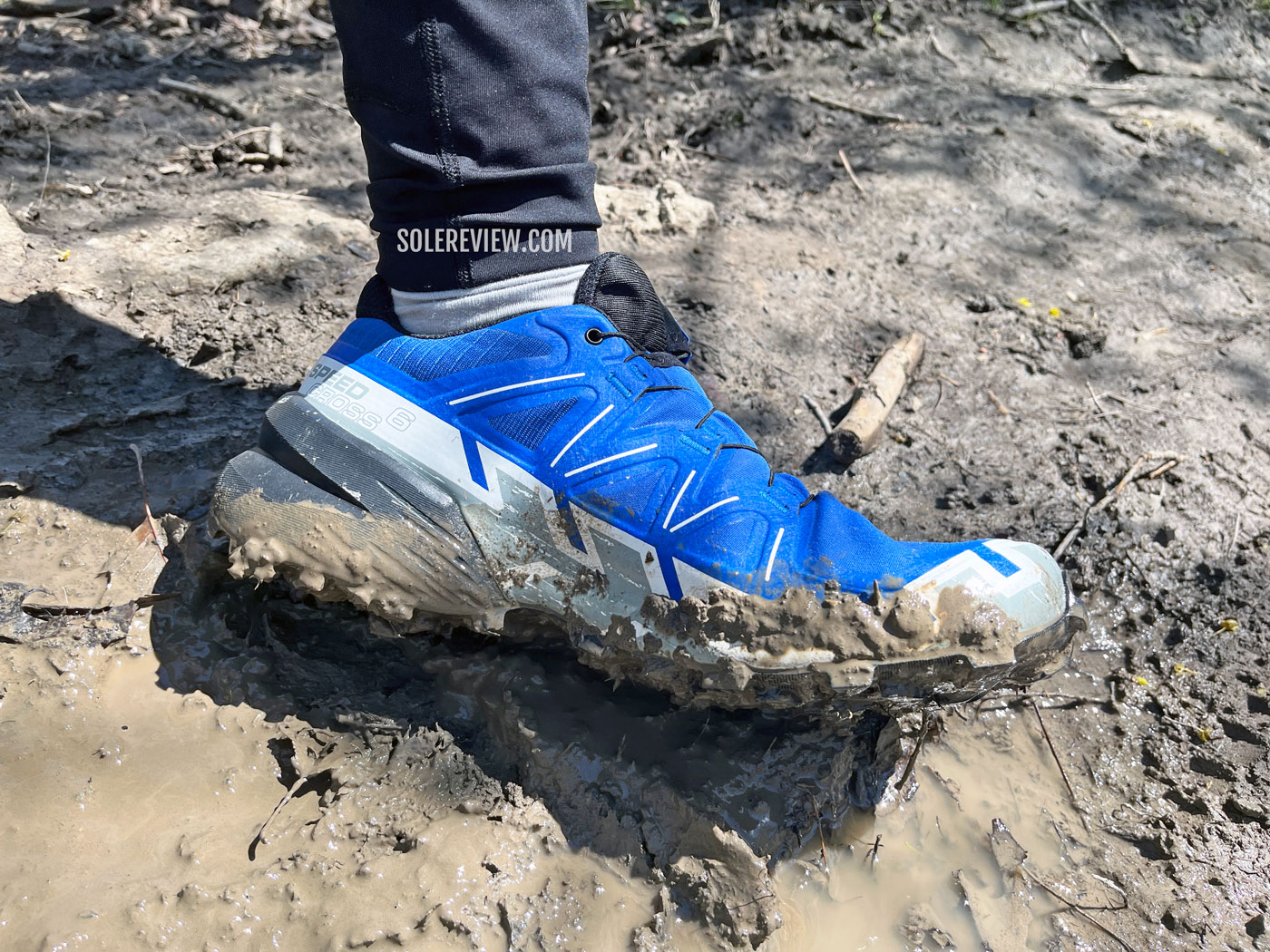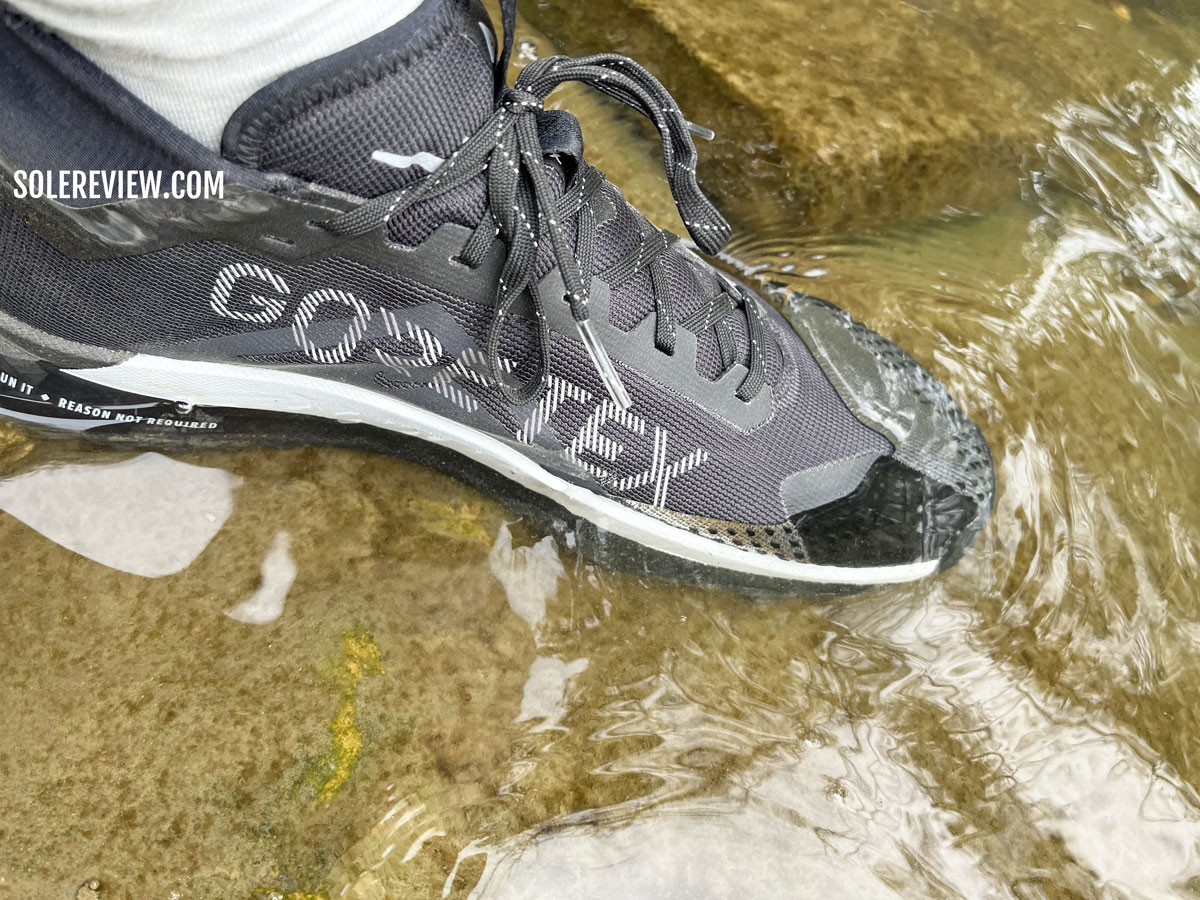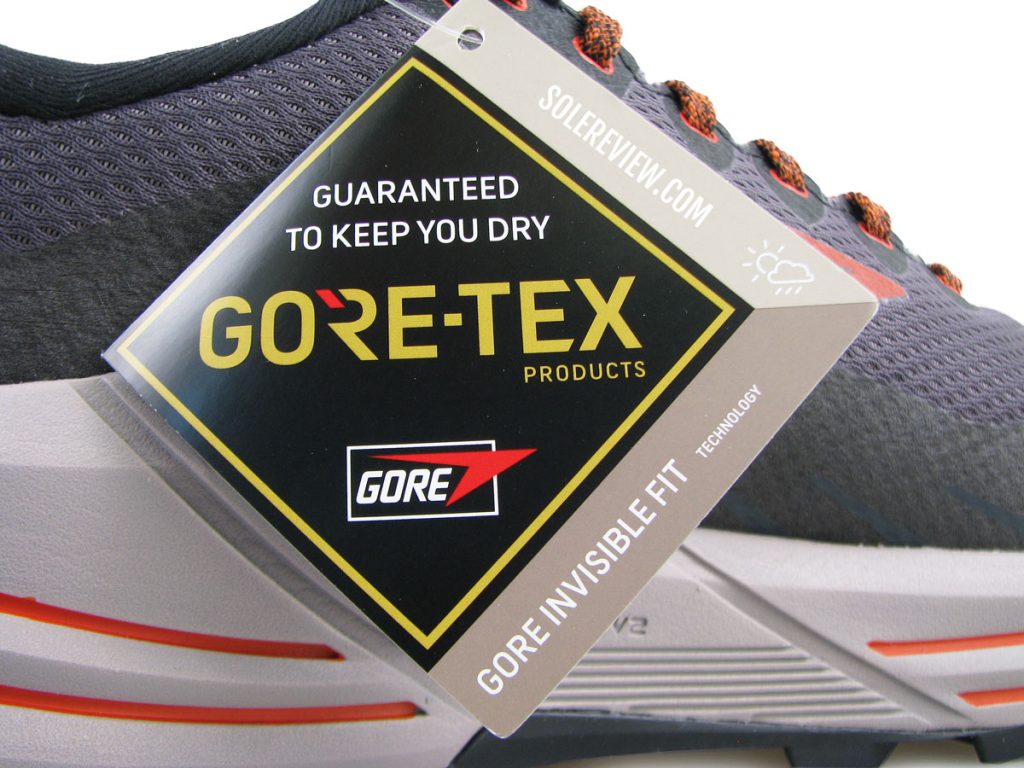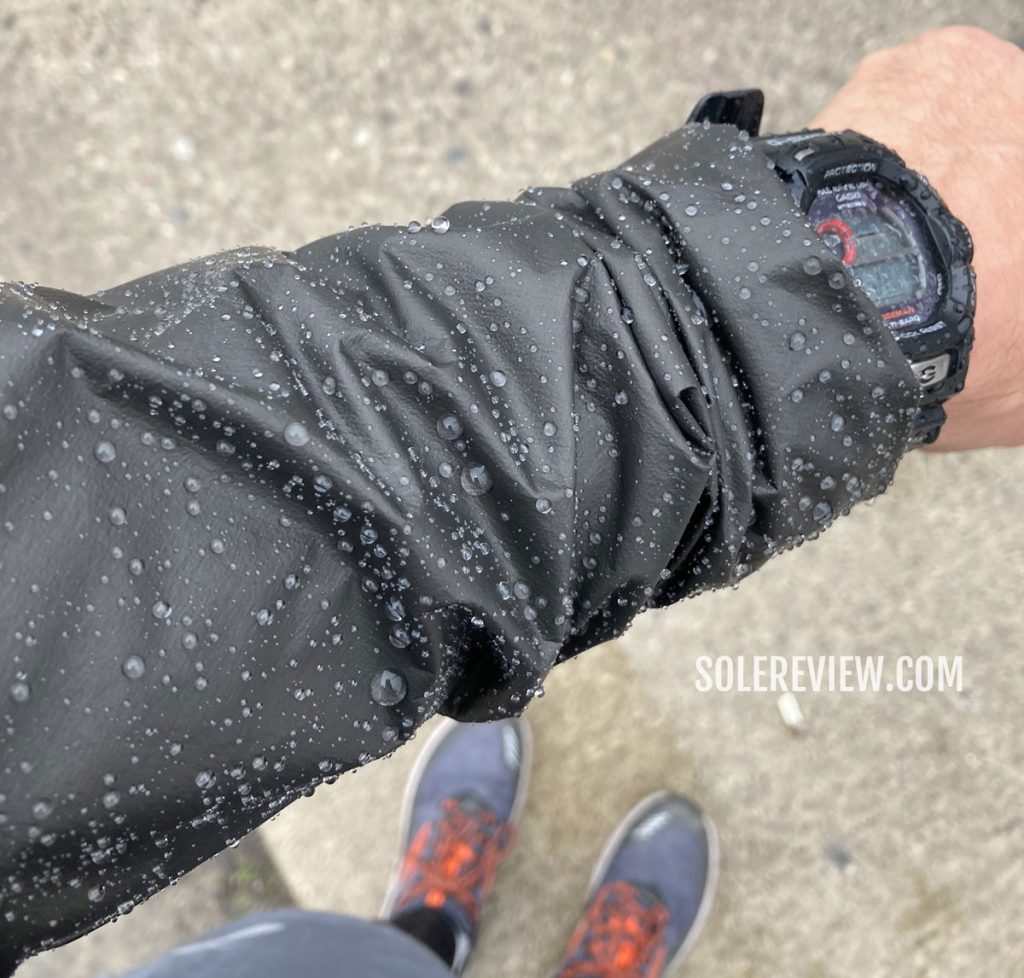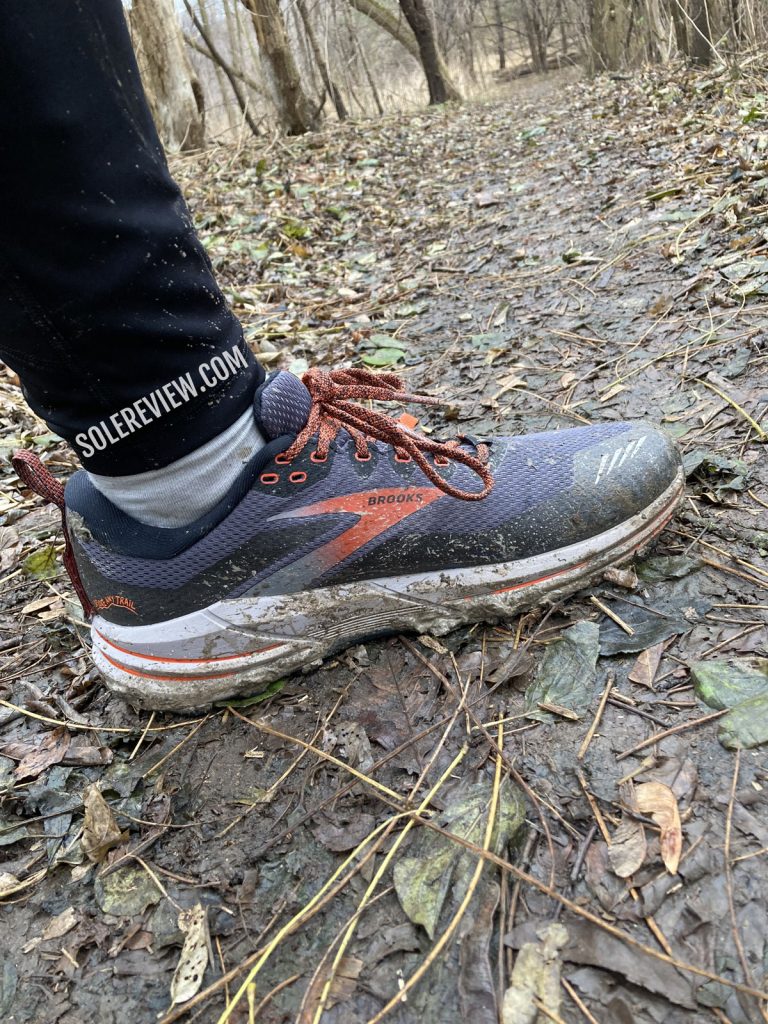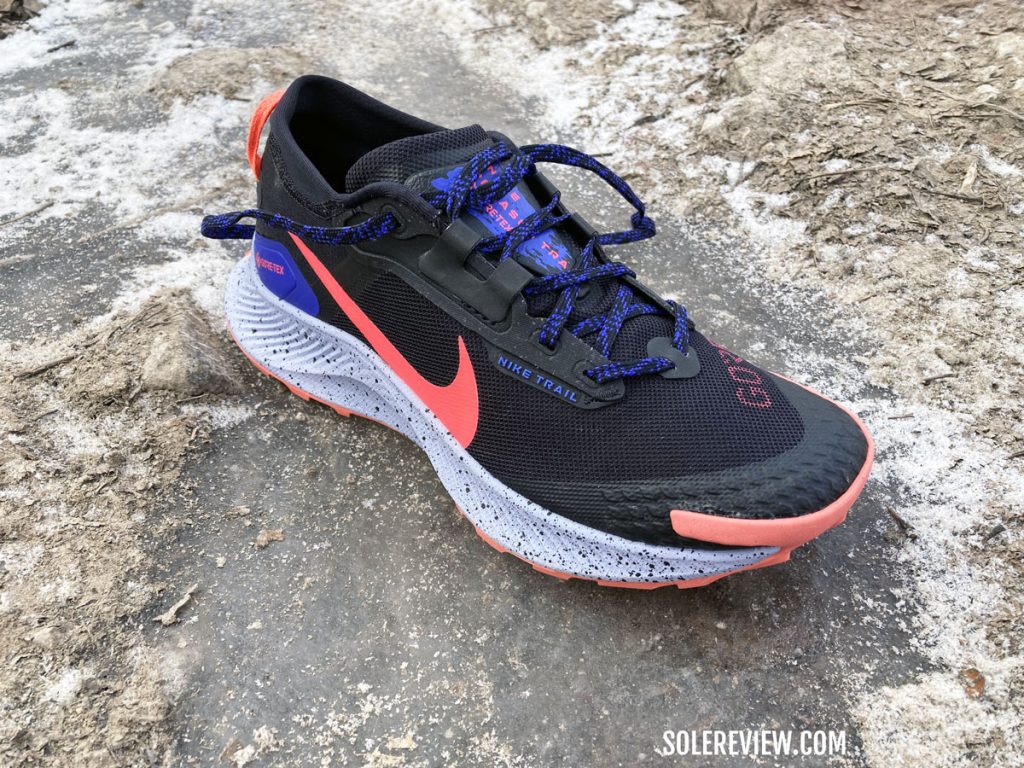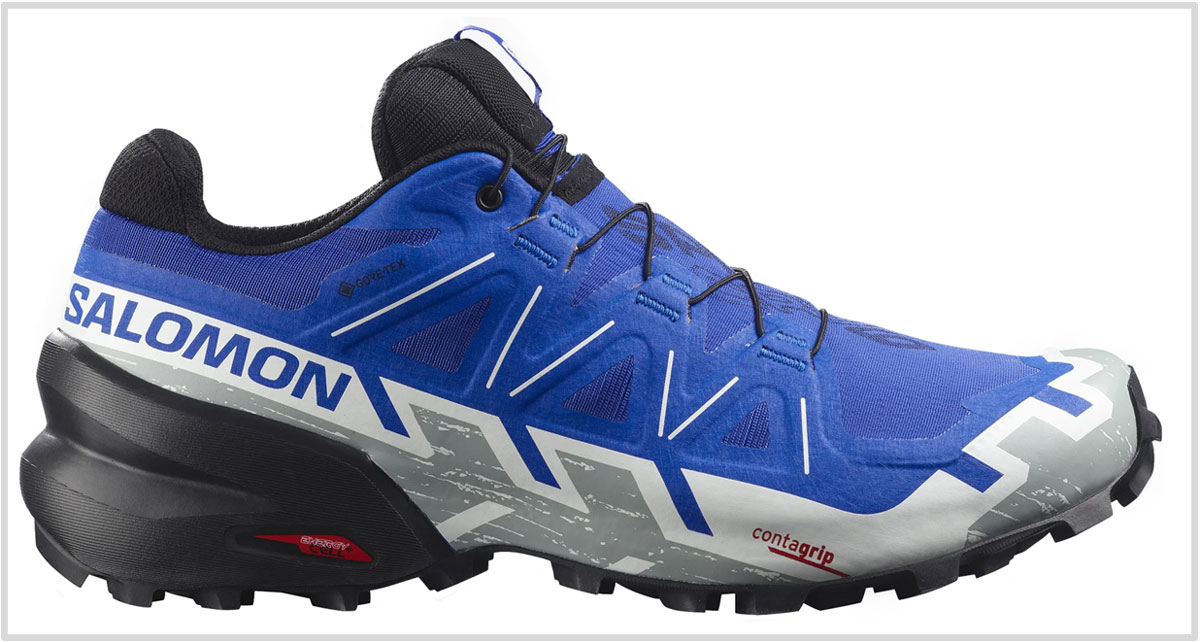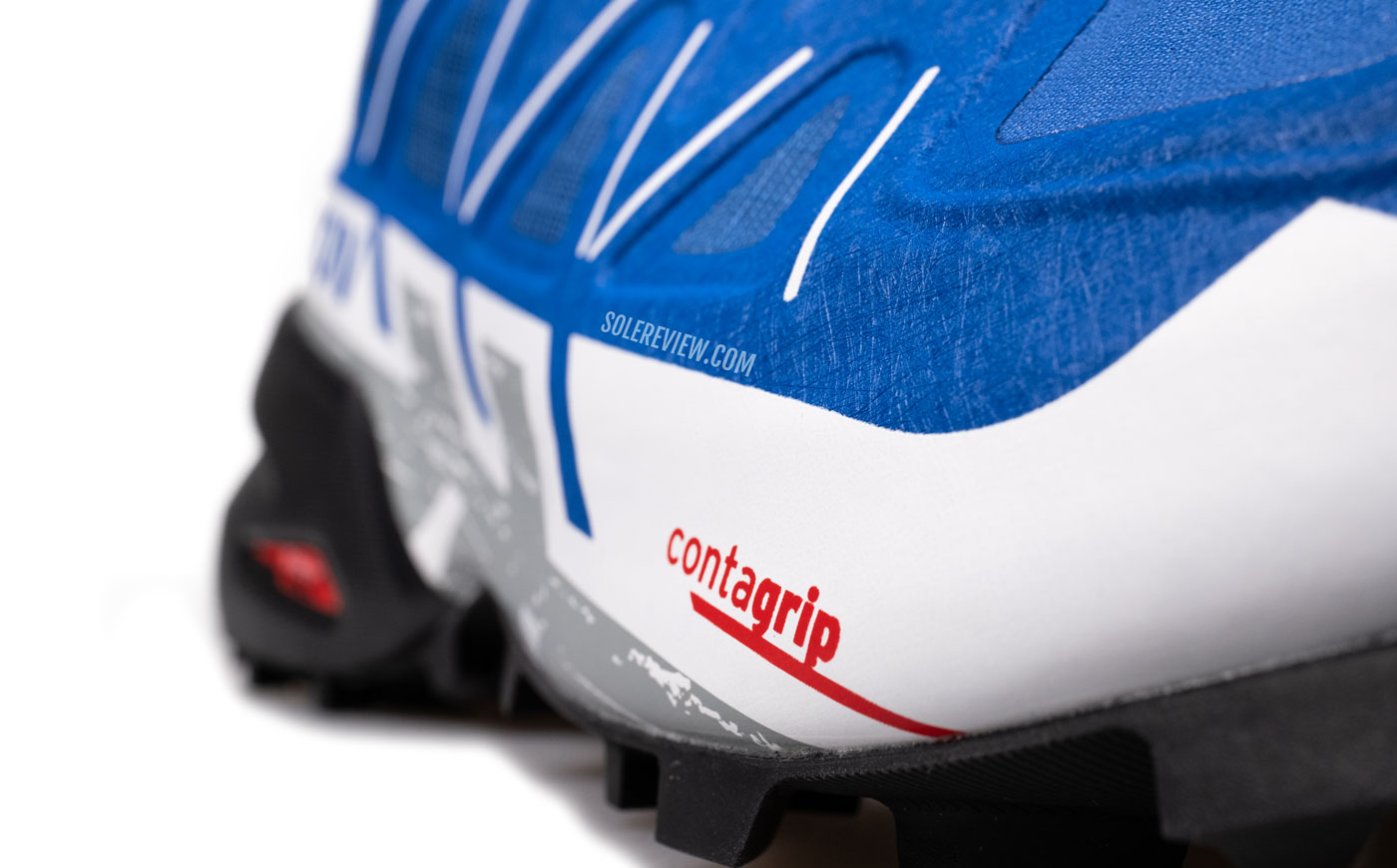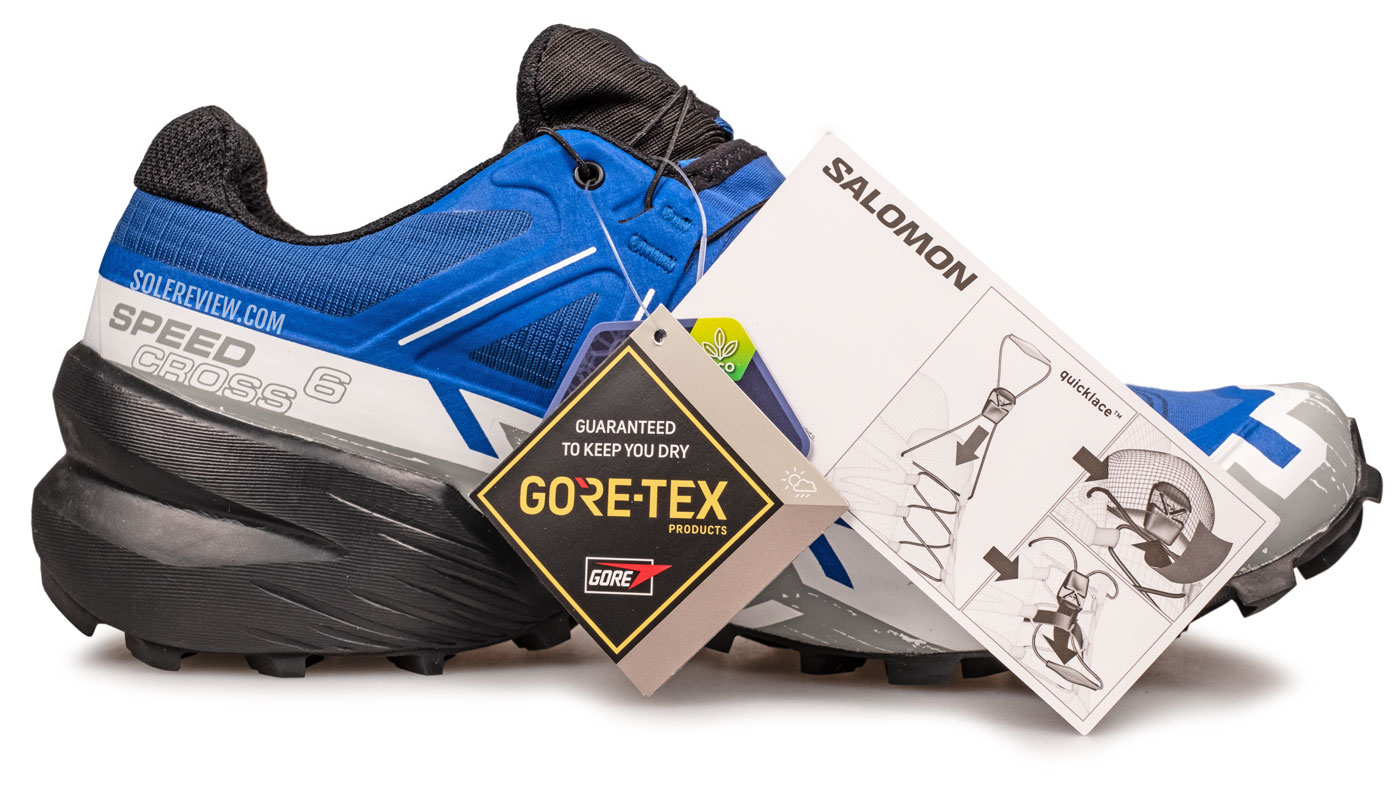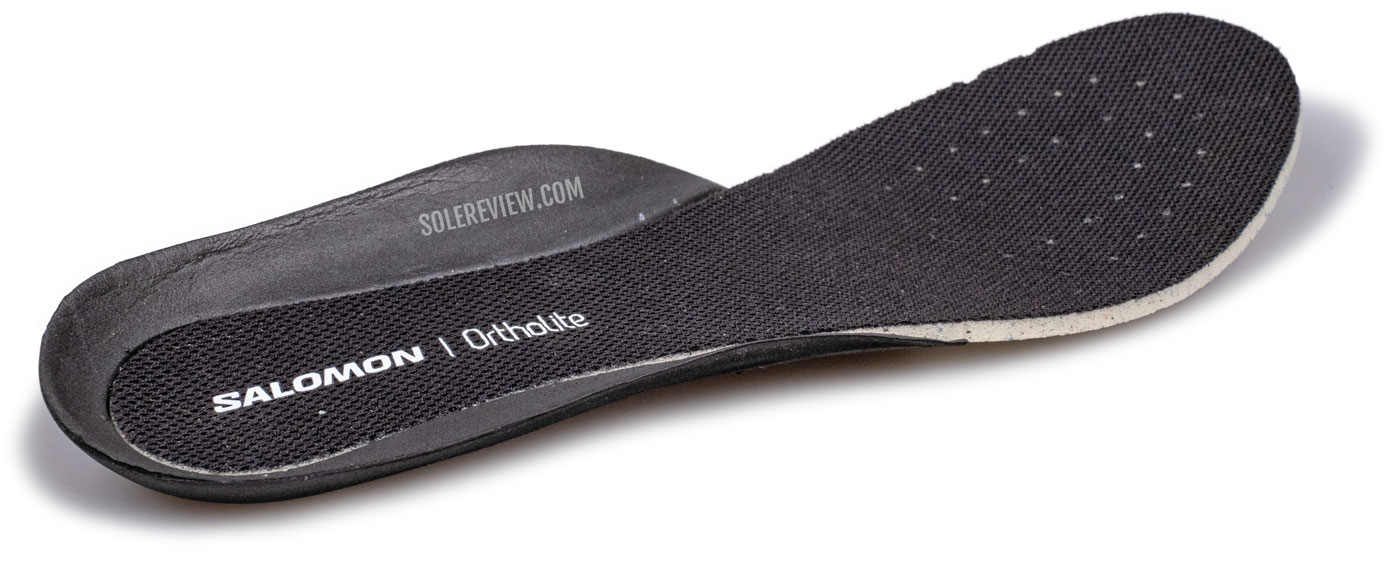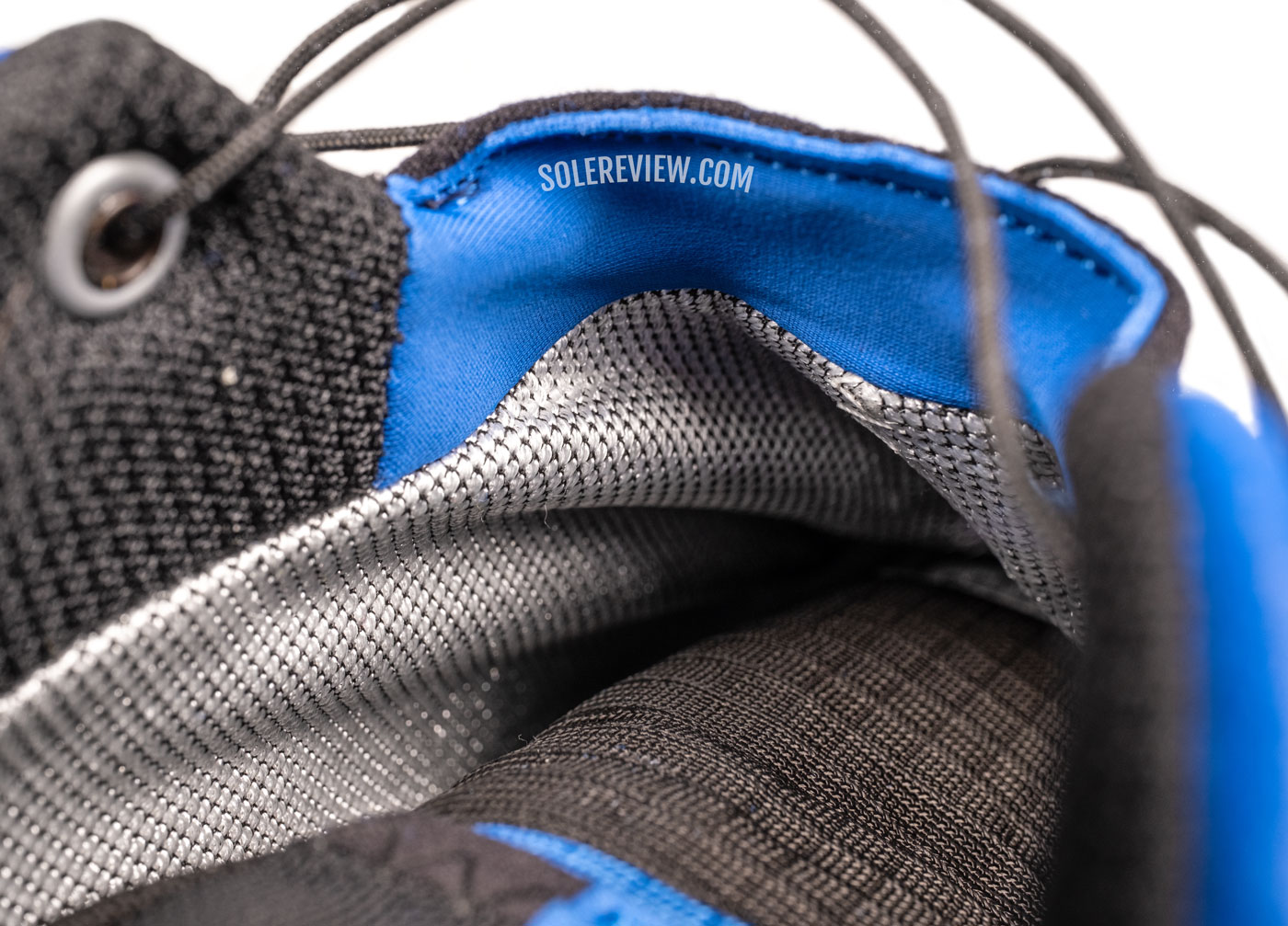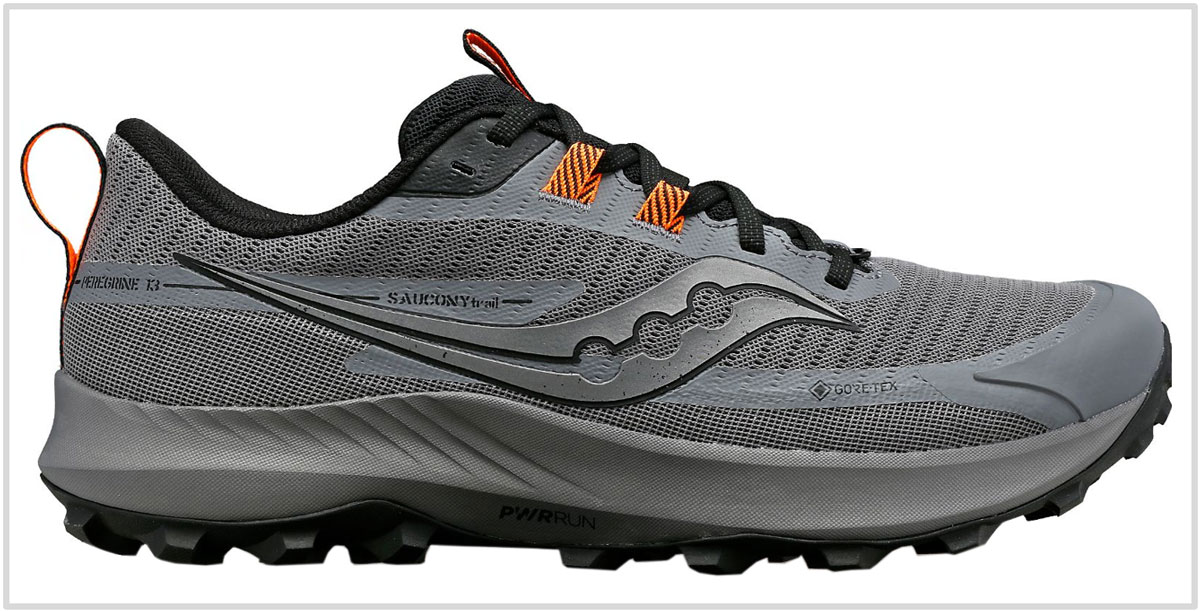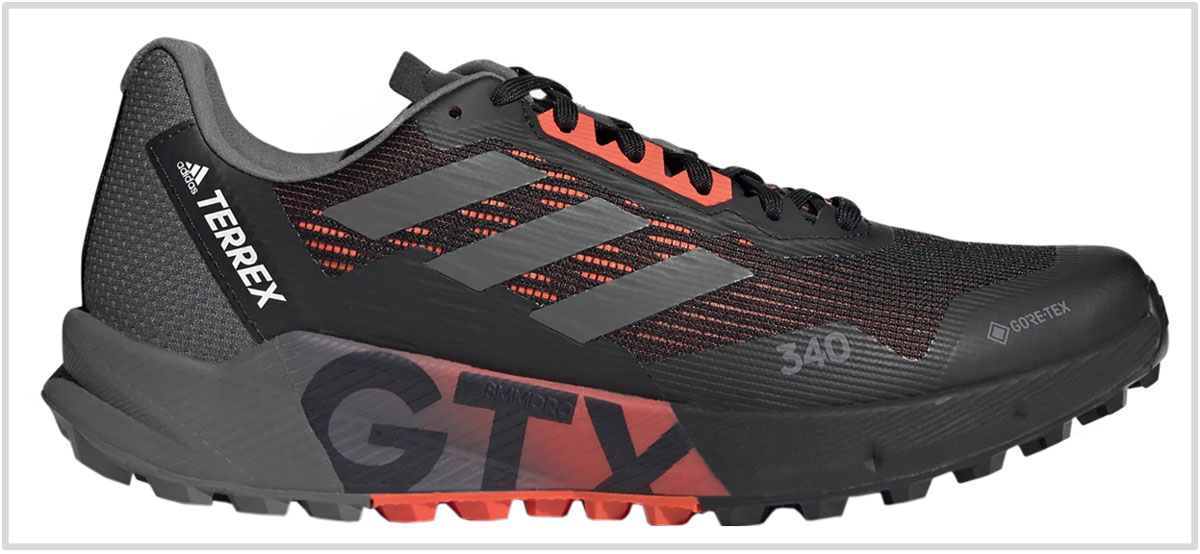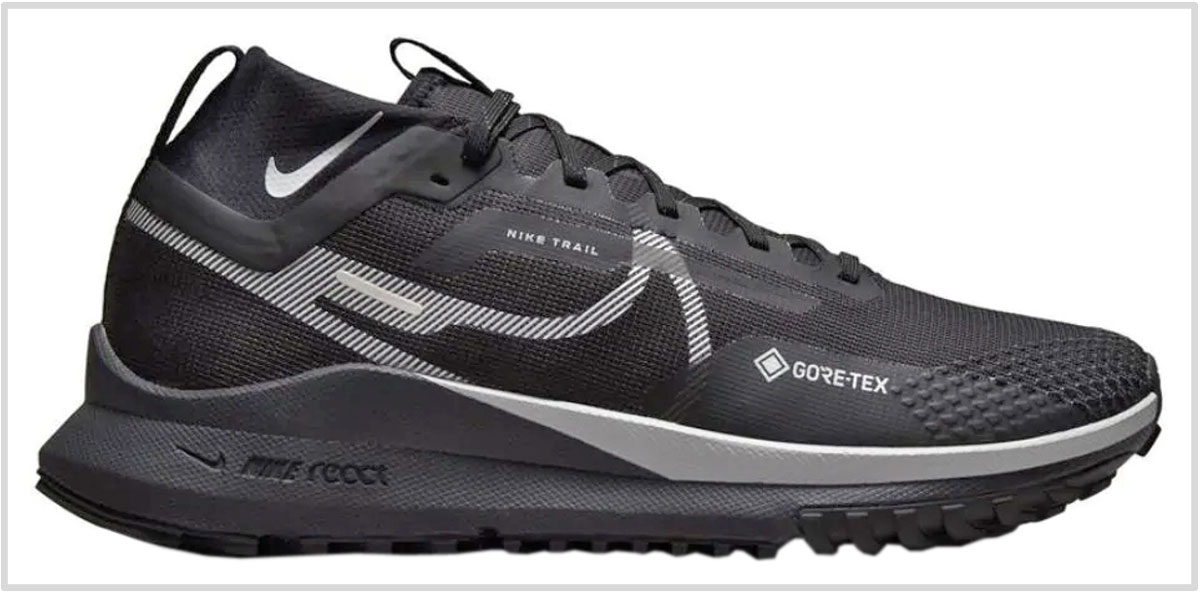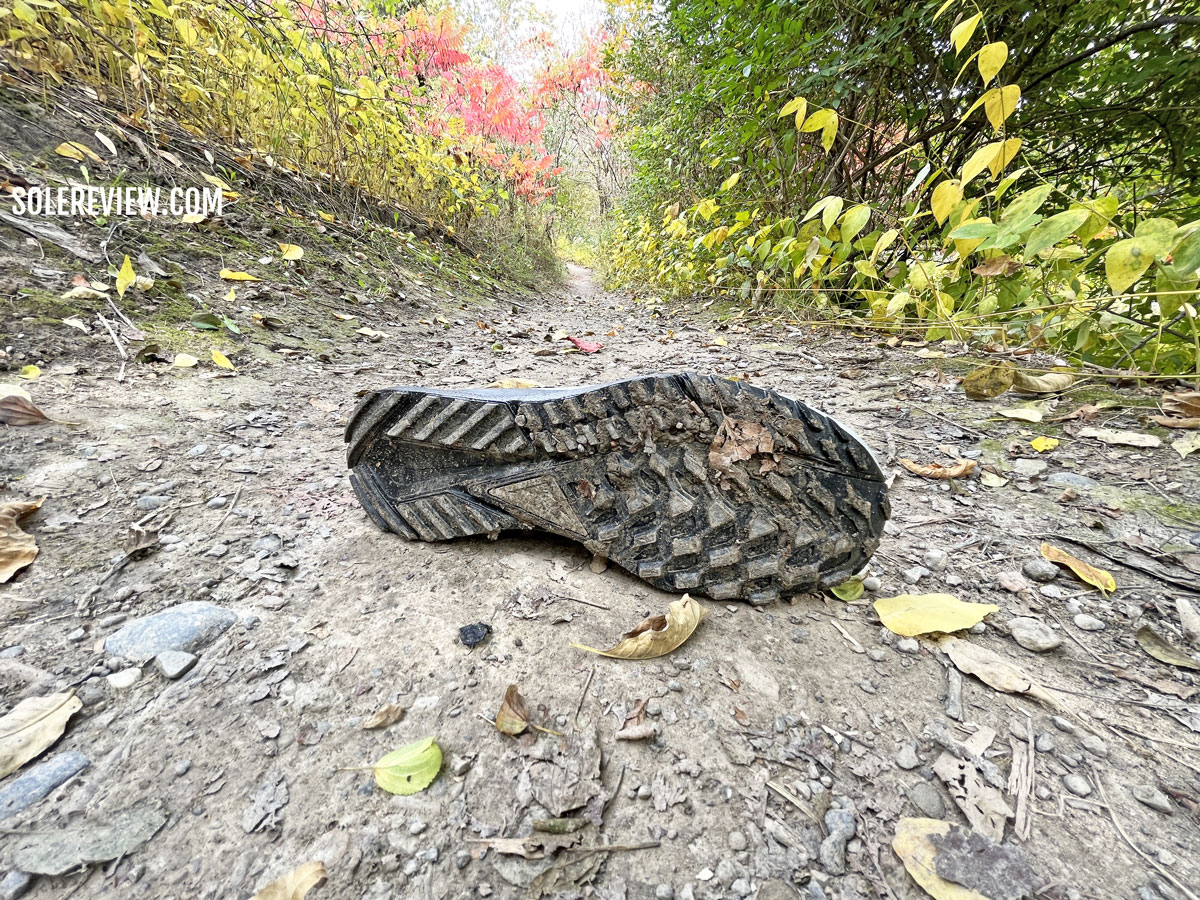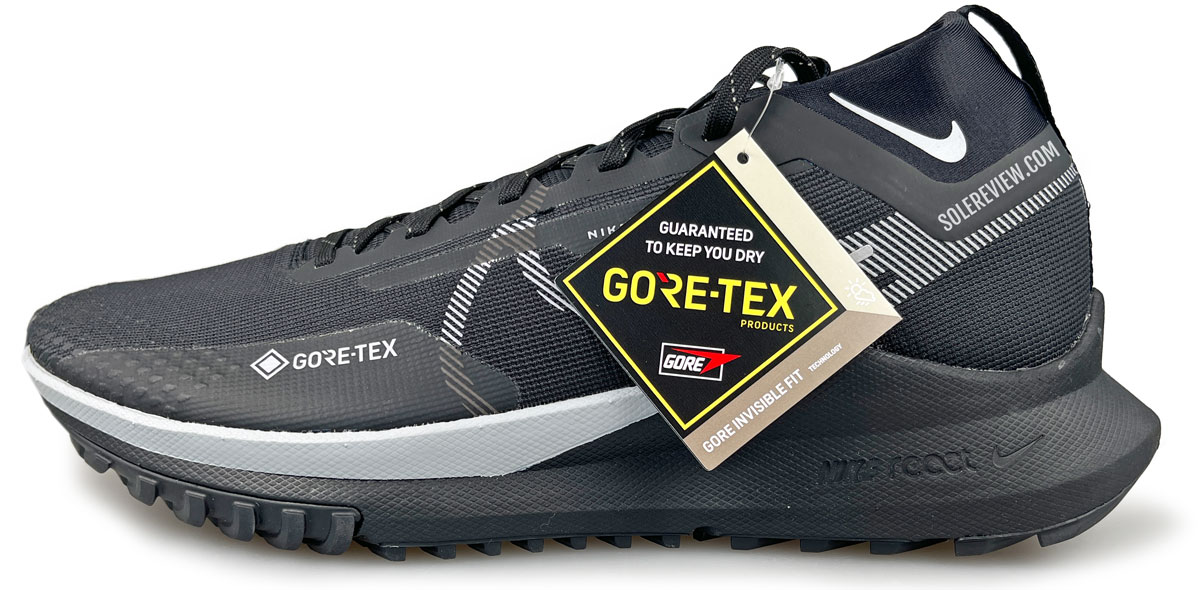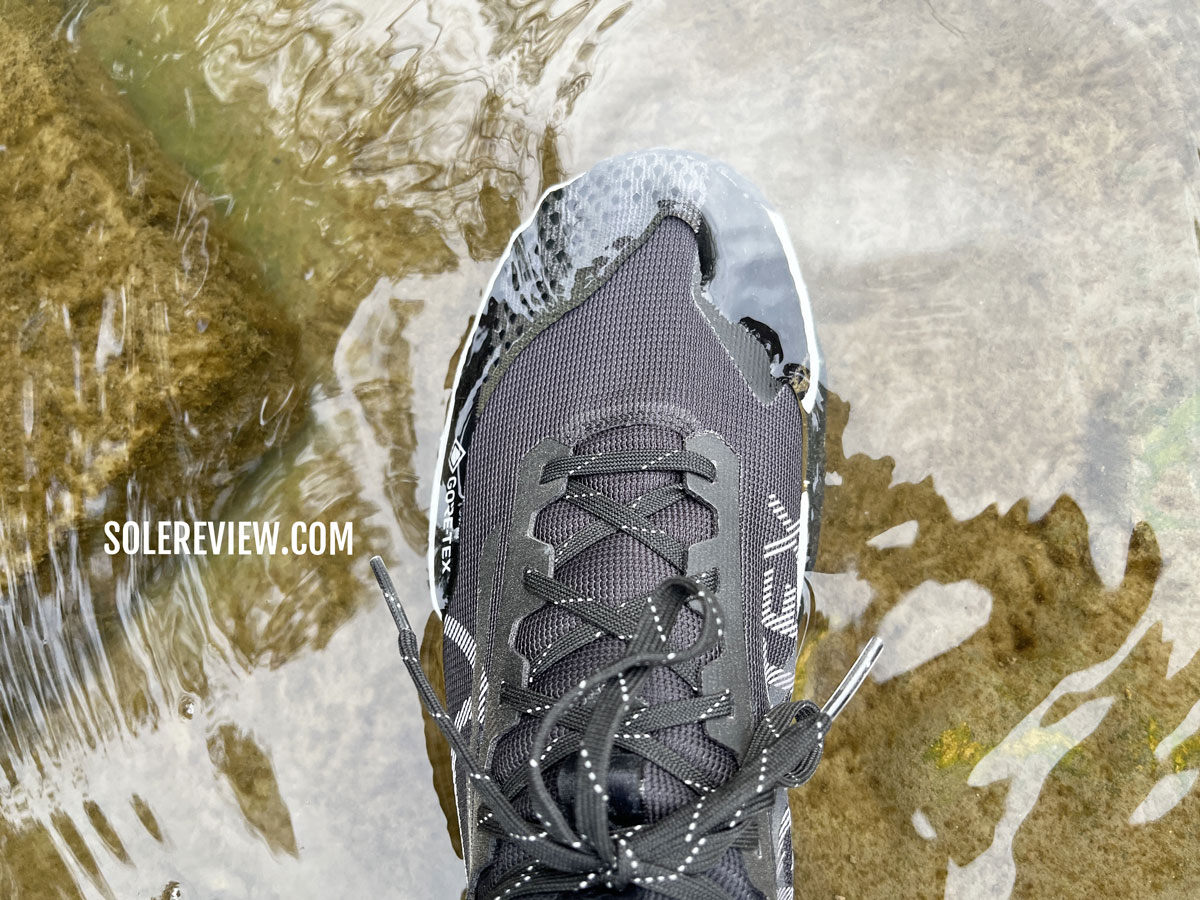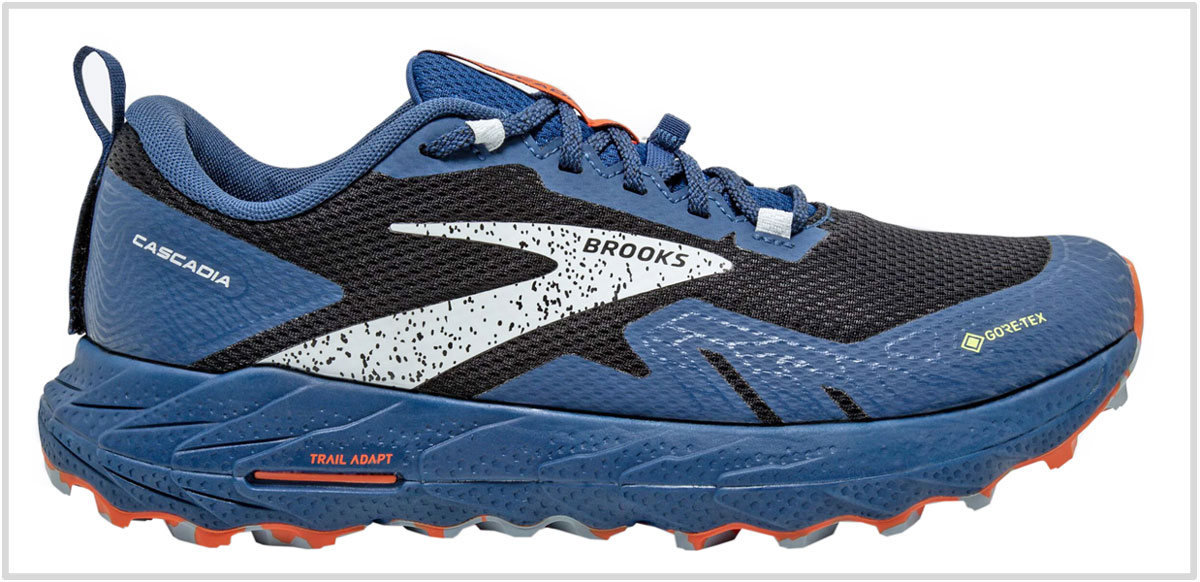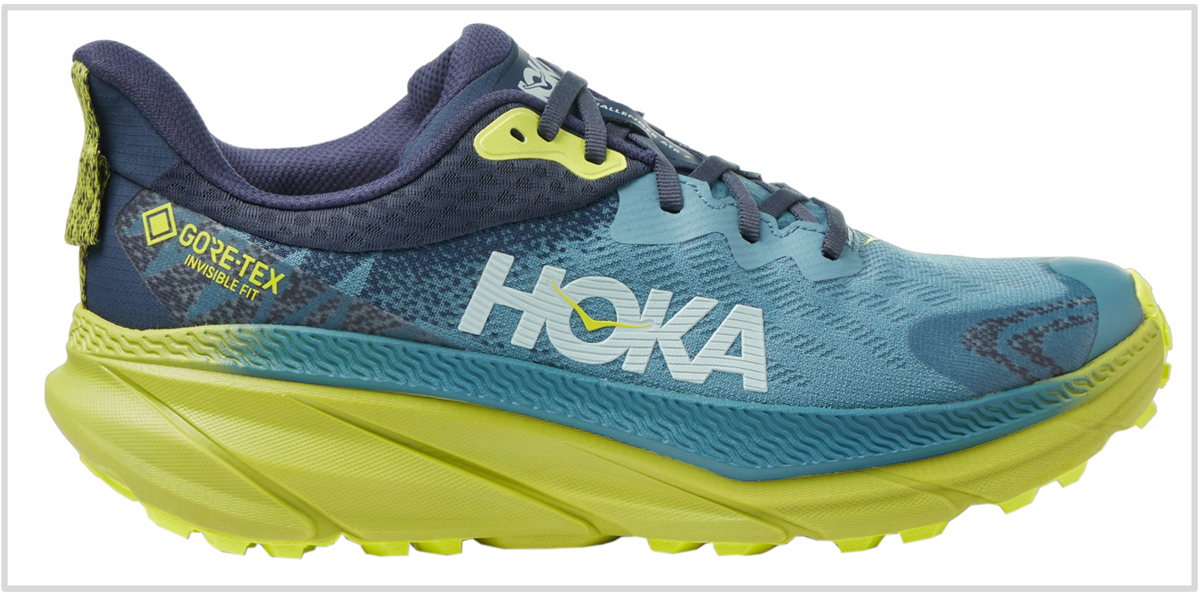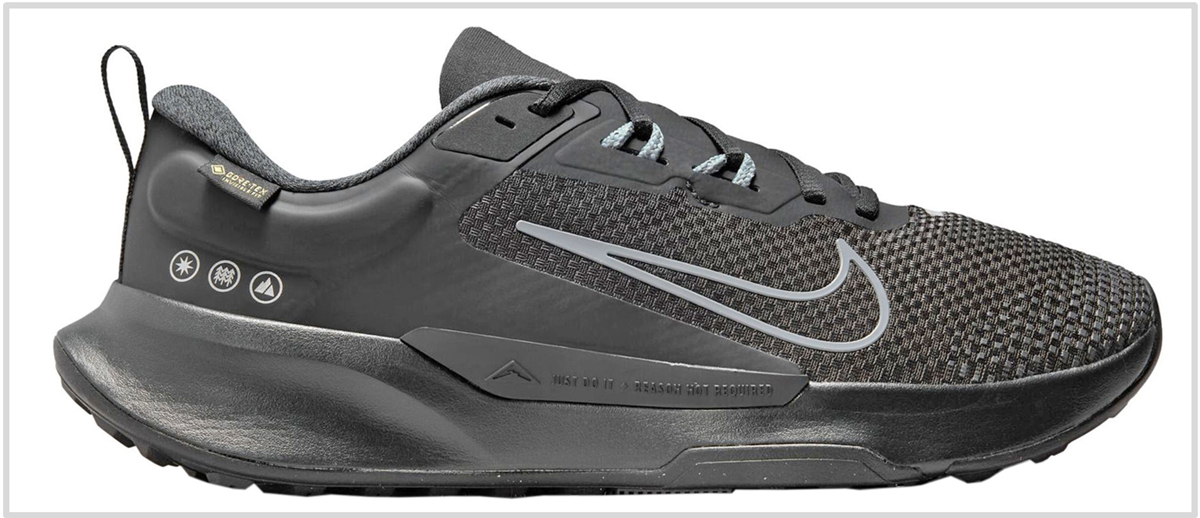This article has been updated with current models for January 2024. Most of the shoes in this guide have been replaced with their updated versions. Except for the narrower ‘B’ width, the women’s models are almost identical to men’s. When you make a purchase using the retailer links, we may earn a small commission.
In this product guide:
- 1. Factors to consider
- 2. Our top waterproof trail shoe pick: Salomon Speedcross 6 GTX
- 3. Versatile waterproof trail shoe: Saucony Peregrine 13 GTX
- 4. Versatile waterproof trail shoe: adidas Terrex Agravic Flow 2
- 5. Waterproof road-trail hybrid: Nike Pegasus Trail 4 GTX
- 6. Cushioned trail running shoe: Brooks Cascadia 17 GTX
- 7. Waterproof cushioned trail shoe: Hoka Challenger 7 GTX
- 8. Affordable waterproof trail shoe: Nike Juniper Trail 2GTX
- 9. Waterproof trail shoe for snow and ice: Salomon Spikecross 6 GTX
Running on wet trails is a messy business. It becomes a veritable sludge fest, with each footstrike splashing mud everywhere. On the legs, running pants, socks, and anything that’s within a meter’s vicinity of the ground.
The shoes take the brunt of it. Even a 30-minute trail run following a rain shower changes how the shoe looks; the midsole and upper are caked over with clay.
But that’s not the real problem. Any trail running shoe gets dirty very quickly – that comes with the territory. However, if water enters the shoe, that’s when things turn unpleasant. The socks will absorb the water, and there’s nothing worse than wet feet during a run.
Though most trail running shoes offer a reasonable level of protection against dust and debris, the same cannot be said of waterproofing.
Trail running shoe uppers have closed, yet non-waterproof mesh to keep the feet ventilated. Sure, a waterproof gaiter helps, but it doesn’t cover the forefoot which happens to be the primary entry point for water.
Therefore, the only option is to buy a trail running shoe with a waterproof membrane. Most brands use Gore-Tex, while some brands provide waterproofing through other suppliers.
Here’s a quick overview of the features that make a waterproof shoe better.
Look for a Gore-Tex label
Gore-Tex is the gold standard of waterproofing. There’s something to be said about a company that exists solely to produce waterproof textiles for the footwear and sportswear industry.
That’s their specialty, and they’ve perfected it into an art form since the 70s. The waterproof membrane is also breathable to let the condensation escape. In other words, the pores on the membrane are too small to let the water in, but large enough for the water vapor to exit.
In the old days, a Gore-Tex membrane was relatively thick and usually made the upper fit narrow. Today, that’s no longer true. We’ve reviewed several shoes on this site with Gore-Tex waterproofing, and none of them had a narrow or stiff fit.
For example, both the Salomon Speedcross 6 GTX and Nike Pegasus Trail 4 GTX have a waterproof upper that’s thin and pliable. That’s the Gore-Tex ‘Invisible Fit’ for you.
As a side note, some of the other Gore-Tex variants are incredibly thin. Pictured here is the GTX Active Shakedry on a bike jacket; this ultra-thin and hyper-lightweight jacket can be folded to fit inside an adult palm.
An outsole with wet-grip traction and geometry
With wet trails comes slippery terrain. So running on a muddy or puddle-filled trail isn’t just about a waterproof upper. The outsole needs to have the right kind of compound and lug geometry.
Fortunately, many waterproof trail running shoes are shod with wet surface-friendly outsoles and deep lugs. Our guide only includes outsole designs that have an advantage on wet terrain.
For example, Saucony uses soft Pwrtac lugs, and Salomon also uses a similar material for the SpeedCross 6 GTX. Brooks and Nike also do well here.
However, the traction – no matter how good – will suffer on slushy clay, hard ice, or algae-coated rocks.
Lastly, use a gaiter if the weather allows
Unless the trail running shoe has an in-built gaiter that’s also waterproof, attaching an aftermarket gaiter vastly increases the chances of the feet staying dry.
It can get warm with a gaiter, so using a waterproof cover during the summer may not be a good idea. We recommend the Kahtoola Levagaiter Mid GTX for running shoes.
The thin strap makes it easy to wrap around the midsole, and the TPU hook attaches to the D-Ring on the shoe. Not all trail shoes are gaiter compatible; the Nike Pegasus Trail 4 and Salomon Speedcross 6 do not have a D-ring.
Solereview recommends: The Salomon Speedcross 6 GTX
At the time of writing this review, we view the Salomon Speedcross 6 GTX as the best all-around waterproof trail running shoe. The Speedcross’s capabilities extend far beyond its waterproofing. Our performance review is here.
It’s the only shoe on this guide to have a double-lasted construction. Unlike most running shoes, the midsole isn’t visible from the outside; it’s wrapped inside the upper.
This allows the EVA foam midsole to be slimmer and flush with the upper edge, which in turn, improves the stability and fit security.
We’re glad to see that Salomon Speedcross 6 has retained most of the features from the SpeedCross 5. Even with a new midsole and outsole, the Speedcross 6 is nearly identical to the Speedcross 5 because of the very similar construction and design approach.
There’s a separate heel midsole that cups the foot on both sides, and an Ortholite insole creates a softer cushioning layer. This creates a ride character that’s cushioned yet speed-friendly.
Though the midsole lacks a traditional rock shield, a TPU film offers protection from the rocks and roots. The widely spaced lugs have excellent traction and minimize clogging.
The upper is generously layered with synthetic – a design that makes the exterior protective, waterproof, and easy to wipe. The full gusset keeps the moisture and debris out; the bungee cord lacing is quick to cinch. Like the Speedcross 5, a D-Ring is missing on the forefoot, so it’s not gaiter-compatible.
1) Saucony Peregrine 13 GTX
The Peregrine 13 GTX is an excellent trail running shoe with high levels of versatility. Despite its redesigned midsole and upper, the Peregrine’s ride character is very similar to the Peregrine 12.
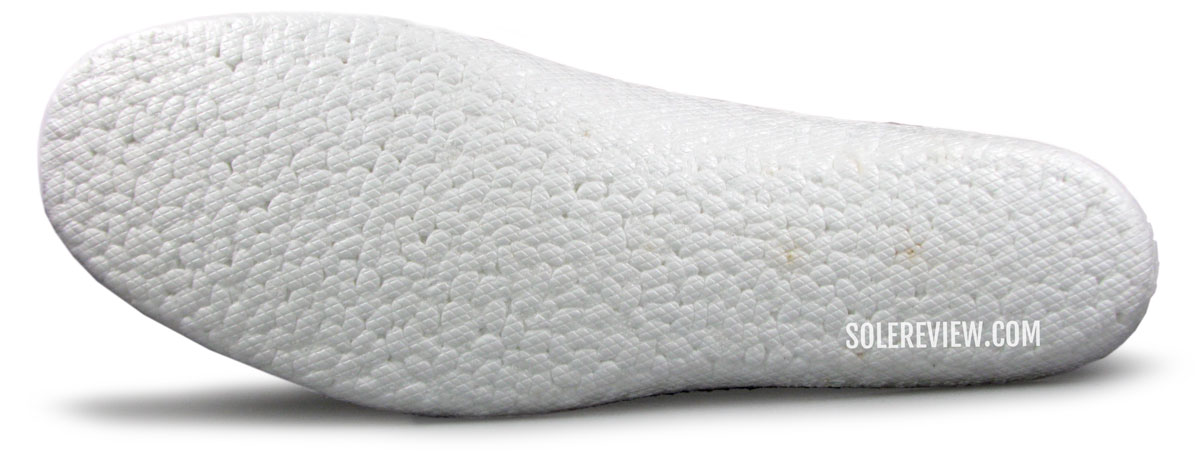
Like the V12, the footbed is made of steam-expanded Polyurethane.
The firm Pwrrun (EVA foam) midsole absorbs impact and works together with the flexible rock shield to form a protective barrier between the trail and the foot.
The firm and low-profile midsole with the 4 mm heel drop is also good for speed trail runs. The Peregrine 13 also offers a healthy level of ground feedback and proprioception.
Just like the last time, the Peregrine 13’s Pwrrun+ footbed enhances the ride comfort.
The waterproof upper has a gaiter D-ring, fused splash guards, and a padded interior that elevates the level of fit comfort. The Gore-Tex lining is the ‘Invisible fit’ variant, which means that the waterproofing does not make the upper stiff or narrow.
2) adidas Agravic Flow 2 GTX
At some level, the adidas Agravic Flow 2 is similar to the Saucony Peregrine. Like the latter, the Agravic Flow 2 uses a firm and supportive midsole made of EVA, and it’s also supported with a laminate for ride stability.
Though the midsole lacks a rock shield as the Peregrine does, the Continental rubber outsole does a good job of protection and grip on the trail.
The Gore-Tex membrane makes the sleeved upper waterproof, and the reinforced exterior locks the foot in protective comfort.
3) Nike Pegasus Trail 4 GTX
Our in-depth review of this shoe is here, but here’s an overview of the Nike Pegasus Trail 4 GTX.
Rather than being a serious trail running shoe, this Nike product is a road-trail hybrid. In other words, the Pegasus Trail 4 performs well on roads, flat gravel, and chip trails, as well as mild gradients.
The Pegasus Trail 4 loses the single-piece outsole of the Pegasus Trail 3, and opts for a more road-friendly design. So it’s a weaker trail shoe than the outgoing Pegasus Trail 3.
Instead of being a successor to last year’s model, the Pegasus Trail 4 feels like a continuation of the Pegasus Trail V1 – namely the Pegasus 36 Trail.
Besides the obvious Gore-Tex waterproofing, several features make this shoe an excellent dual-purpose trail runner.
The React midsole has a soft cushioning that wouldn’t feel out of place on a road shoe, so this is what makes the Pegasus Trail so comfortable over flat surfaces. The tacky rubber outsole has well-defined lugs with a flat surface – thus reducing the wear and tear on harder surfaces.
Even with the waterproof Gore-Tex lining, the upper is supple and spacious. Mind you, there’s no gaiter loop on the forefoot.
Also see: New Balance Hierro V7 GTX.
4) Brooks Cascadia 17 GTX
The Cascadia 17 has changed; it’s not as it used to be. If you’ve read our review of the Cascadia 16, you’d know what we’re talking about the midsole softness.
But as they say – win some, lose some. What the Cascadia loses in softness, it gains in protection, stability, and transition quality. Instead of the regular ‘Ballistic rock shield’ of the Cascadia 16, the midsole has an articulated plate designed like a fork under the forefoot. This design offers protection and better toe-offs while allowing the foot to do the work.
In the rear, the same plate forms a ‘wing’ on the sides for support.
A two-layer midsole made of Brooks’s DNA Loft (an EVA blend) foam makes the ride comfortable for long trail miles. Its wide footprint, flexible rock plate, and grippy outsole make the ride supportive and safe on most trails.
However, running on wet terrain requires an abundance of caution, no matter how good the outsole is. That said, the Cascadia 17 is versatile enough to be a regular trail runner as well as a long-distance workhorse.
The spacious and secure interiors are very smooth due to the seamless design.
5) Hoka Challenger 7 GTX
If the Peregrine 13 GTX doesn’t meet your comfort requirements, it’s worth trying the waterproof Hoka Challenger 7 GTX.
The latter is a road-trail crossover like the Peregrine, but with a difference – it’s got a higher level of cushioning that works better for high-mileage trail runs.
The outsole lugs aren’t aggressive, so they work on roads and packed trails without accelerated wear and tear. A good way to view the Challenger would be to do so as the off-road version of the Clifton 9.
The upper design makes it obvious that the Challenger 7 prioritizes comfort over protection. Except for the TPU-reinforced toe box, there’s barely any layering – it’s all mesh. So even with the Gore-Tex membrane, the waterproof upper is secure yet supple.
The Challenger 7 is best used as a road-trail hybrid, a distance trainer for flat trails, or a hiking shoe.
6) Our budget pick: Nike Juniper Trail 2 Gore-Tex
Calling the $130 Juniper Trail 2 GTX a ‘budget’ shoe is a stretch of imagination. But considering that most Gore-Tex-equipped trail runners retail between $150 to $170, the Juniper Trail 2 doesn’t seem all that bad.
Like the Pegasus Trail, the Juniper Trail 2 is also a road-trail hybrid rather than a trail runner for technical terrain. With its shallow lugs and perforations, even the outsole looks very similar to the Pegasus Trail. The EVA foam midsole and insole make the midsole comfortable enough for road and off-road runs.
The GTX-lined upper has a few clever touches. The fused panels on the heel and midfoot add protection while making it easier to clean. The foot is secured by an inner sleeve as well as cord-assisted lacing. The upper forms a couple of flaps over the tongue to minimize the entry of moisture and debris.
Both the tongue and heel collar use soft-touch meshes for comfort.
7) Our icy winter pick: Salomon SpikeCross 6 GTX
It’s very easy to understand the Spikecross 6 GTX – it’s a Speedcross 6 with metal outsole spikes. That means that the Spikecross 6 is the only shoe on this list capable of taking on icy surfaces.
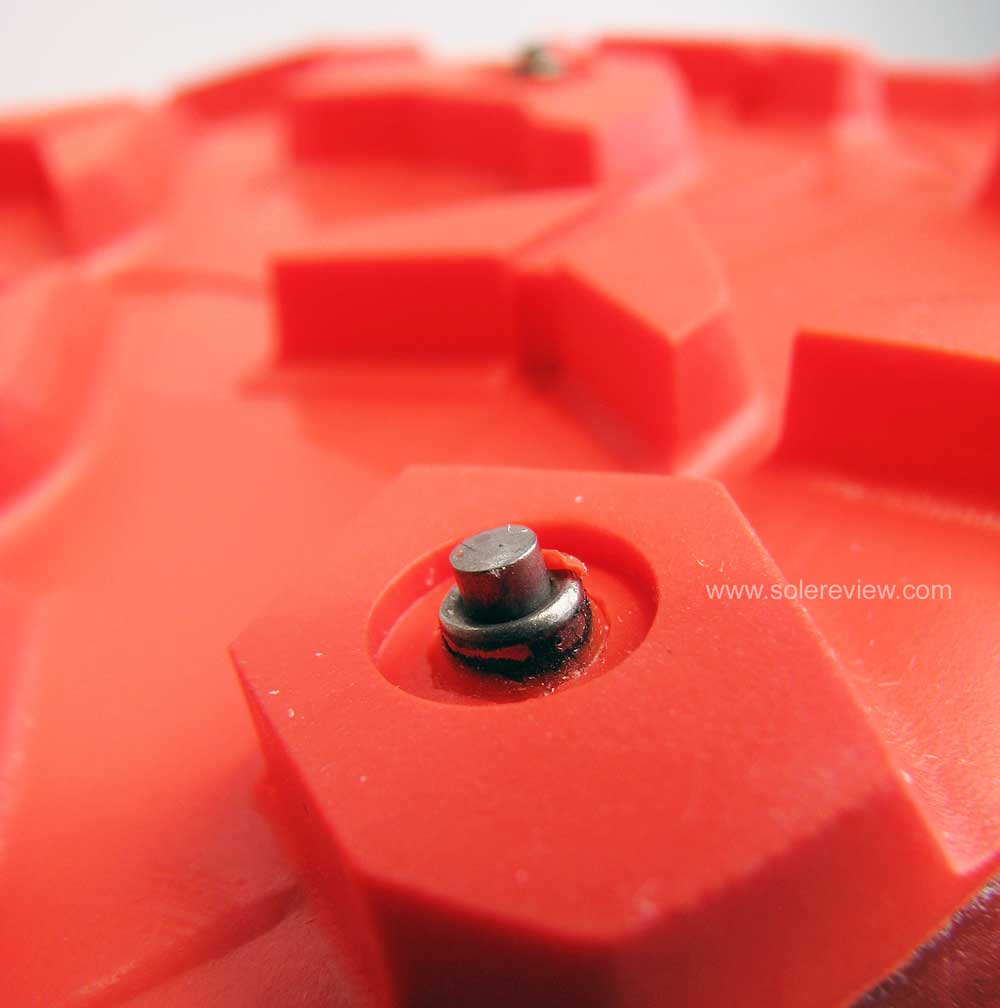
The metal studs on the Salomon Spikecross are mounted on the lugs, thus allowing them to grip deeper.
Besides the Tungten spikes on the soft rubber outsole, the Snowspike has a waterproof gaiter, a secure fit, an easy-to-use cinching system, and a cushioned midsole that works equally well across different speed and distance ranges.
The firm midsole and unique ‘double-lasted’ construction also make the Spikecross every stable. Just know that the Spikecross 6 cannot be worn indoors. Not only will the metal cleats damage the flooring, but it will also slip due to the lack of traction.
Do you own any of these shoes? Improve this review by sharing your insights – submit a review here.

